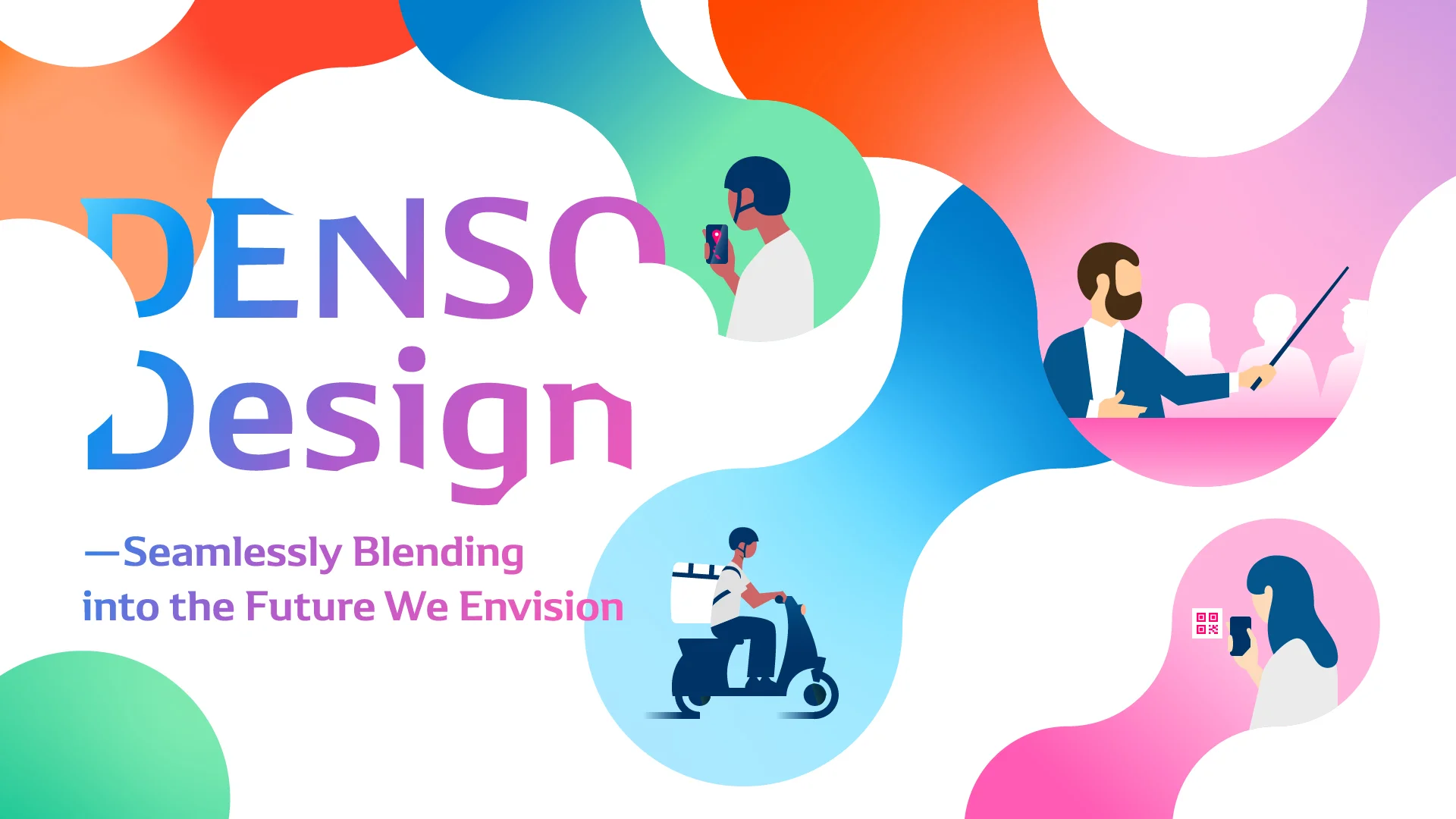Did you find this article helpful for what you want to achieve, learn, or to expand your possibilities? Share your feelings with our editorial team.


Aug 26, 2025
TECH & DESIGNAiming to Implement Design That Considers the Overall Social Experience
The Human Experience Approach: Considering How Design Choices Affect the World around the User
We often find the products and services we use each day to be easy, convenient, or even exciting.They deliver a satisfying user experience—often the best possible one.
But what if something that’s fun and useful for the user ends up negatively affecting society at large—or putting strain on the global environment?
At DENSO’s Design Division, as we remain focused on creating strong User Experiences (UX), we believe it’s just as important to consider how our designs impact the world around the user.
That’s the foundation of our Human Experience (HX) approach—designing with an eye toward society and the environment as a whole.
So what exactly does HX look like in practice, and how does it shape the way we design?
Contents of this article
Design for a Society with Diverse Values and for Its Users
In the early 20th century, as industrial products became part of daily life, the industrial design field began taking shape.
Design, which once mainly supported industry, gradually broadened its role, placing greater emphasis on people and customers as times changed.
Ideas like UI (User Interface), which shapes the touchpoints of a product, and UX, which addresses the overall experience, have since become standard ways of putting users at the center of design.
But in today’s world, where values and lifestyles are more diverse than ever, it’s become harder to define who the user even is.
To navigate this complexity, we need to think beyond direct users and consider a broader community of stakeholders—people whose lives may be indirectly affected by our designs, including future generations and non-human life.
Because design—and the industries it supports—plays such a vital role in addressing today’s complex social challenges, we are now being called to revisit what design should mean in this new era.
HX: A Concept for Expanding What We Consider in Design
DENSO’s design activities date back to the company’s founding. In 1965, these activities were formally organized as industrial design functions under the Technical Management Section of the Quality Assurance Department. Since then, DENSO has used the power of design to support a wide range of technologies and their implementation in society.
While delivering products that help ensure people’s safety and peace of mind, DENSO has also faced its responsibilities to the environment and society with sincerity. Drawing on this wealth of experience, DENSO is now embracing a new design approach for a changing era.
That approach is HX — the vision championed by DENSO’s Design Division.

The HX concept seeks to satisfy both creators and customers while also valuing the experience of all stakeholders involved. By broadening our focus, HX-driven design considers not just the user, but the larger society that our products and services touch—both today and in the years to come.
So, how does HX differ from traditional ideas like UX or CX (Customer Experience)?Yamamoto from the Design Division explains:
“HX doesn’t replace or supersede UX or CX. Instead, it reframes them to better reflect what we truly value. Broadly speaking, the concepts are quite similar.UX tends to focus narrowly on the user, but today’s society demands a more diverse, inclusive way of thinking.We felt the need to expand our perspective and consider multiple viewpoints—not just one—so we could understand the experience of society as a whole. That’s how we arrived at HX.”(Yamamoto)

Grasping the Broader Impact on Society by Expanding and Inverting our Thinking
When applying HX, how can we design while considering society as a whole? The HX approach identifies two key perspectives.
The first is expanding thinking—imagining how a user’s interaction with a product or service affects those around them.
From the user, these effects ripple outward to impact other people (stakeholders), the broader society, and even the environment. By taking this wider view, we can uncover a variety of ripple effects and how they influence different groups.
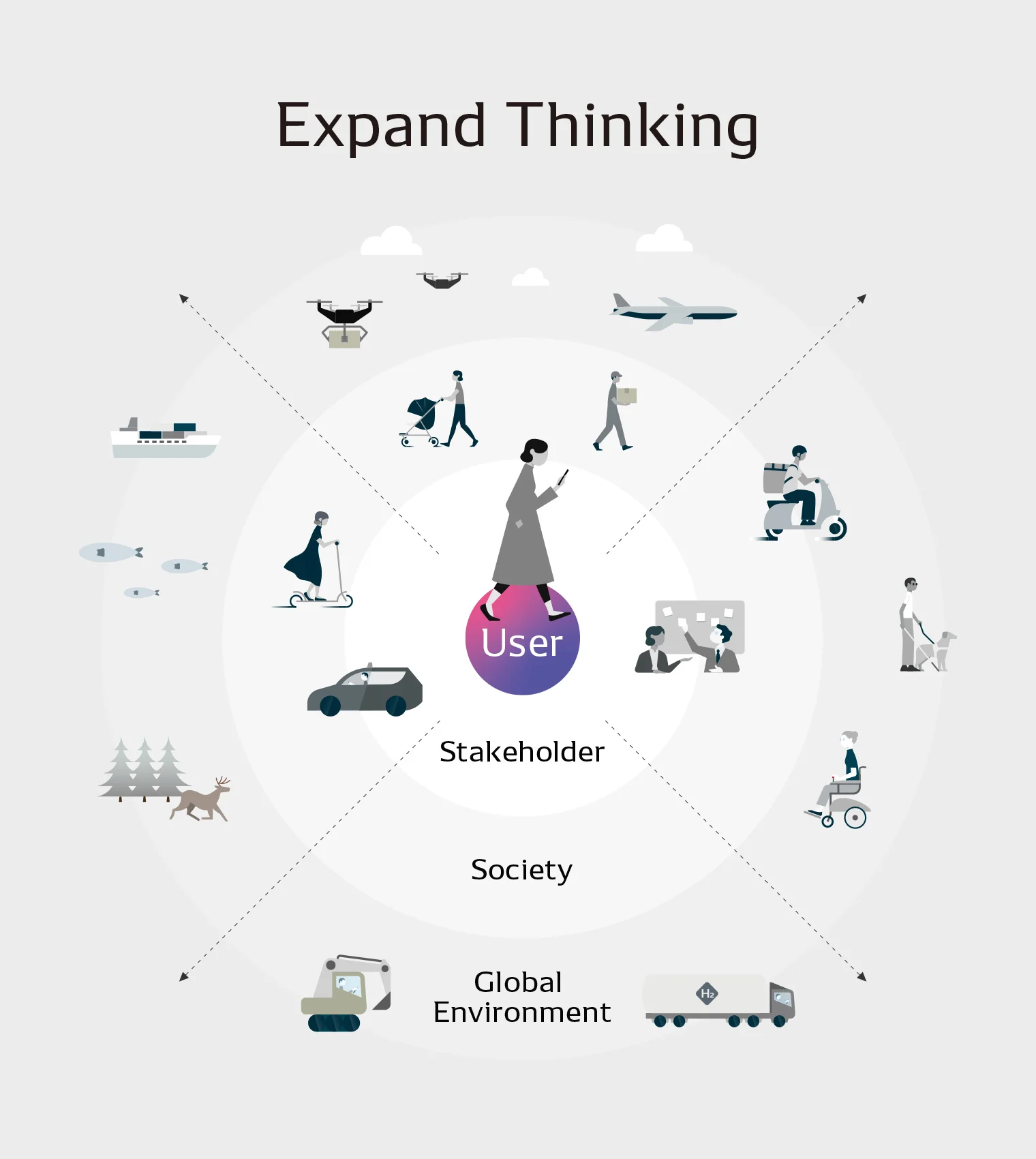
The second is inverting thinking. While a product might offer a positive experience for one person, we also examine the other side of that experience—like looking at a cross-section of the rippleAre people nearby being inconvenienced? Are others left unhappy? Is society quietly bearing a hidden cost?Even if no issues are visible now, we also consider whether problems could arise years or decades into the future. We look comprehensively at the experiences that products and services create.
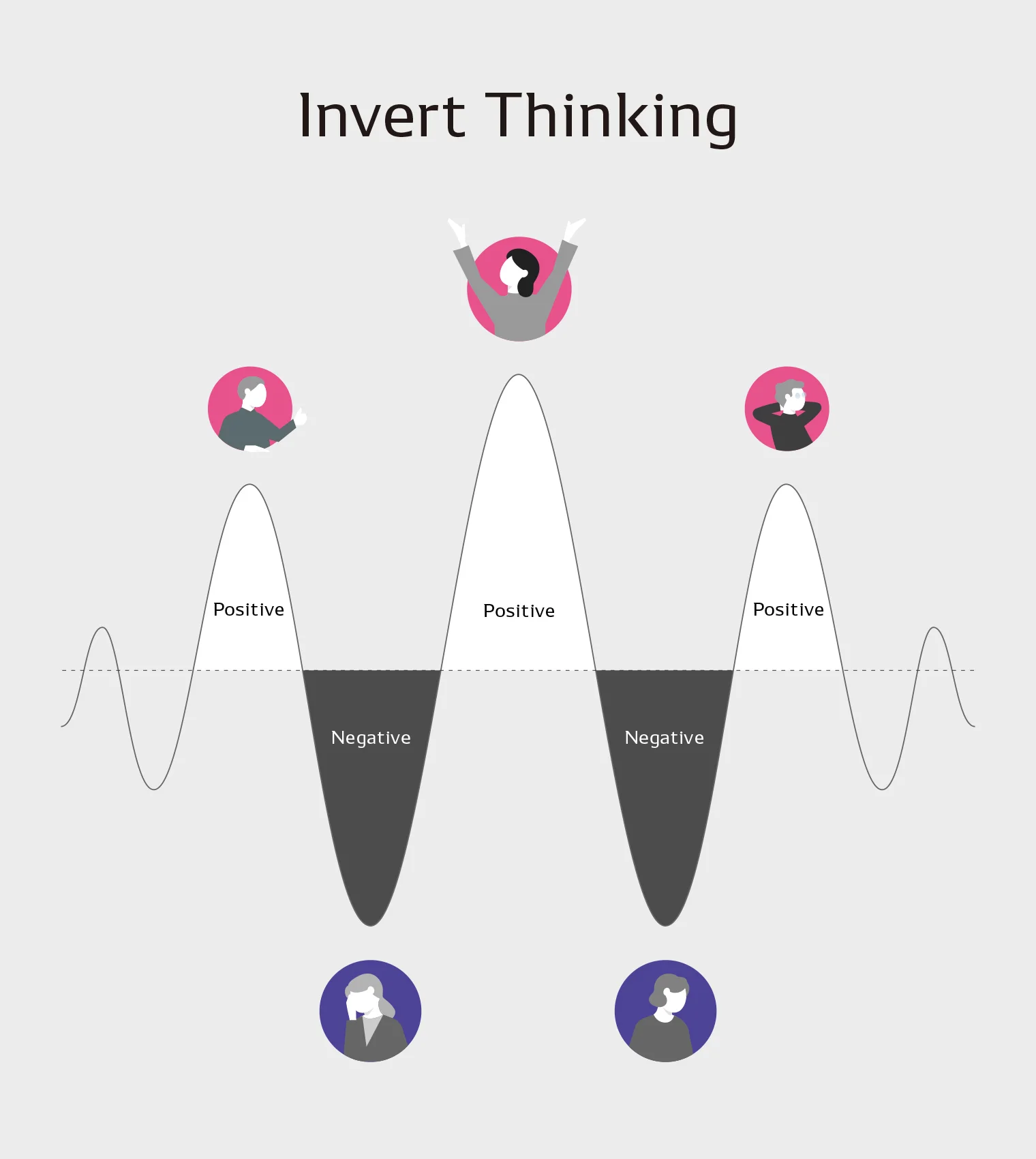
These two perspectives reflect a new vision DENSO has set. Looking toward 2035, DENSO has outlined its vision of a Well-Being Cycle Society—one that maintains social activity while respecting diverse values and definitions of well-being. To support this vision, we are working to create new businesses aligned with it. According to Yamamoto, HX plays a key role in achieving this goal.
“Until now, DENSO has focused on solving problems related to automobiles. But from now on, we aim to tackle challenges that affect society as a whole—with cars being one part of a much broader picture. As our customer base expands to include all of society, the impact of our products will grow as well.That means we’ll carry even greater responsibility—making it more important than ever to consider the well-being of society as a whole. This expanding impact demands a design approach that truly takes it into account.”(Yamamoto)
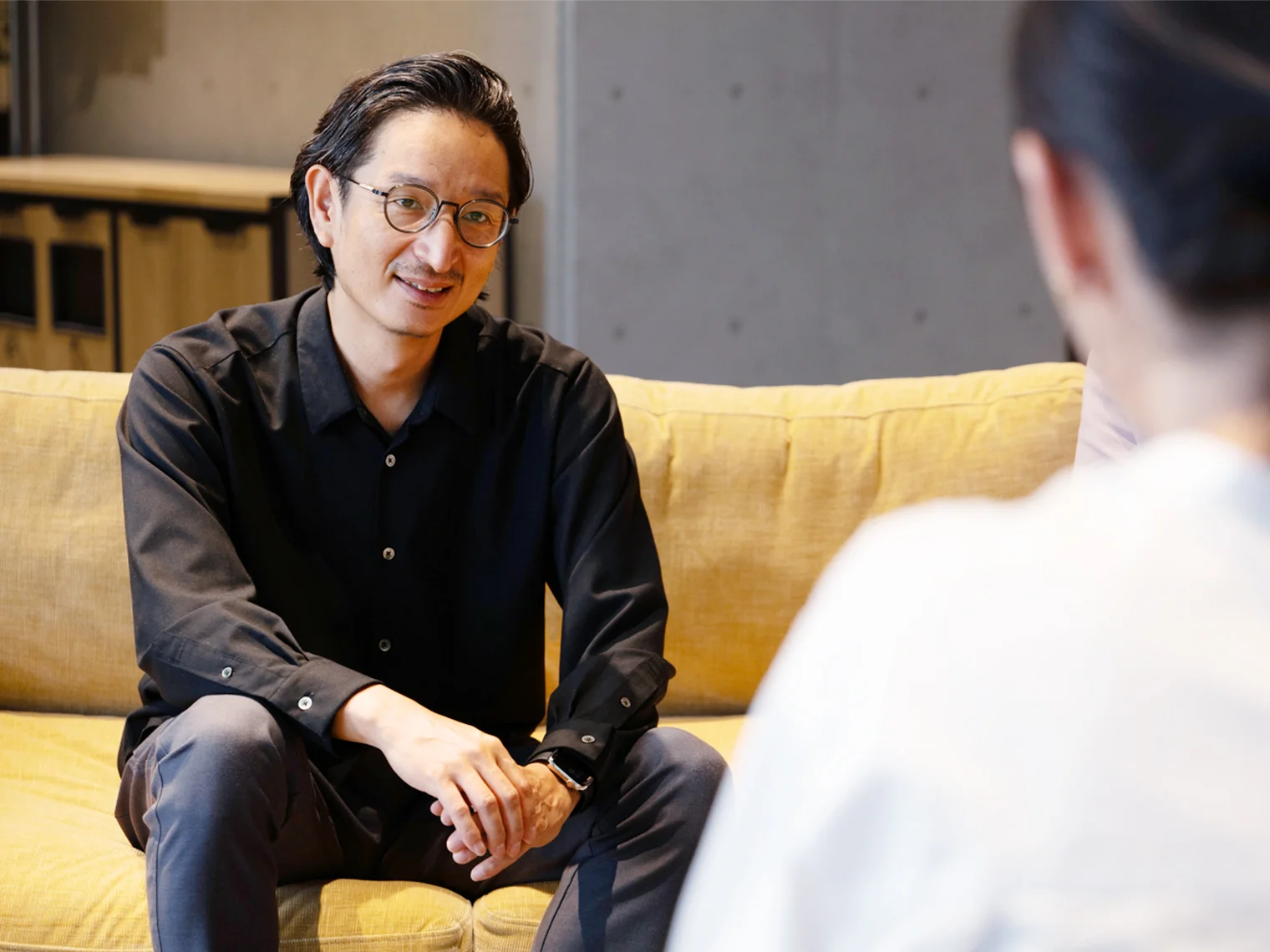
Developing Tools to Convey the Hx Concept
Guided by this approach, we’re now exploring several initiatives—including systematizing the HX concept, developing HX-specific tools, and conducting workshops across generations.
Currently, our focus is on refining these HX tools through repeated workshops with diverse participants.Yamamoto explains that these workshops help people experience the two core HX mindsets: expanding thinking and inverting thinking.
“In one workshop, we tested a framework called HX Othello.Participants took on the role of a development team working on the next-generation version of a product already widely used in society.First, they mapped out the people surrounding the product’s users (expanding thinking), and then identified the hidden negative effects behind the product’s positive aspects (inverting thinking).Next, they worked on generating ideas for how to turn those negatives into positives in the new version.”(Yamamoto)
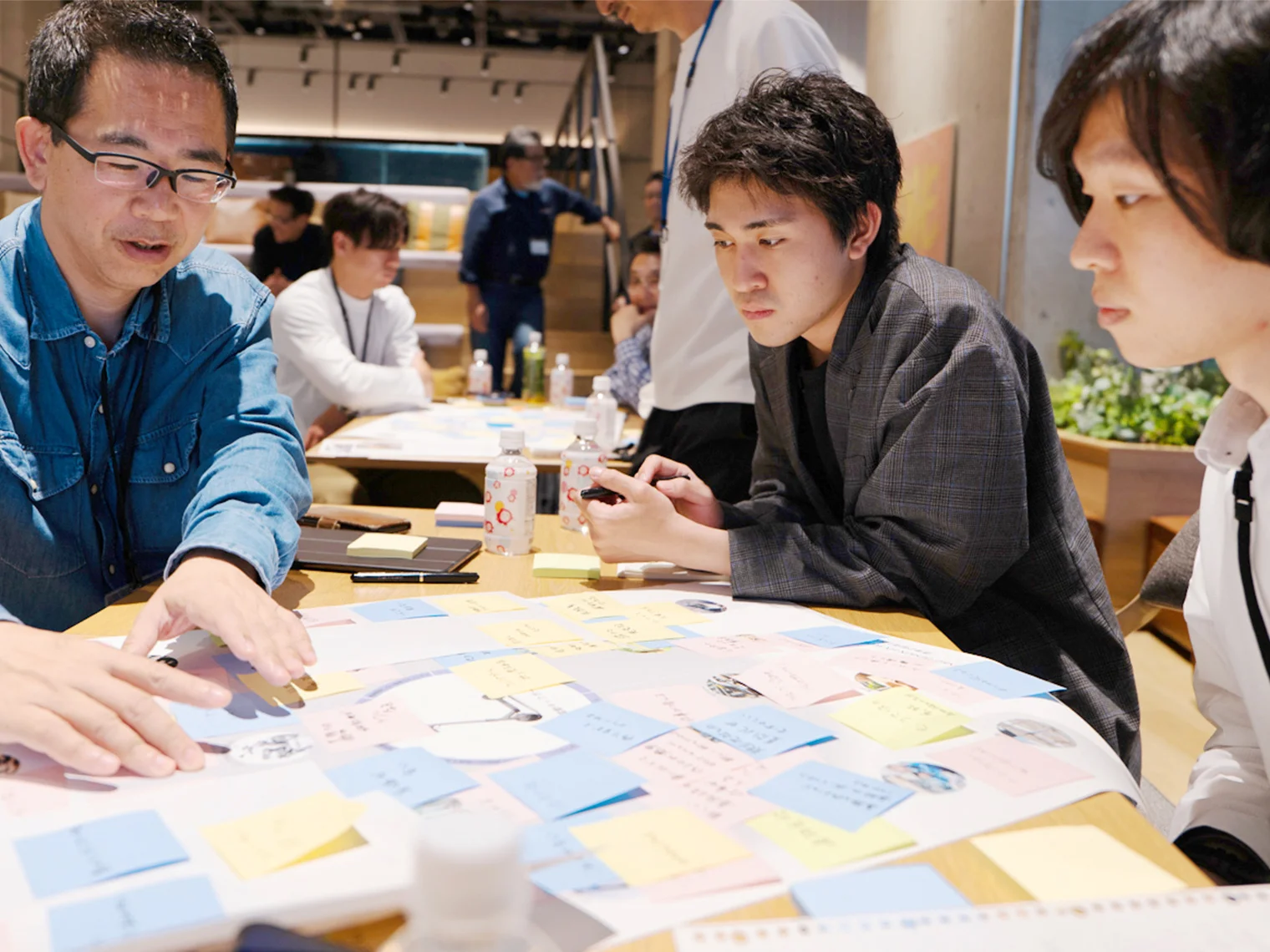
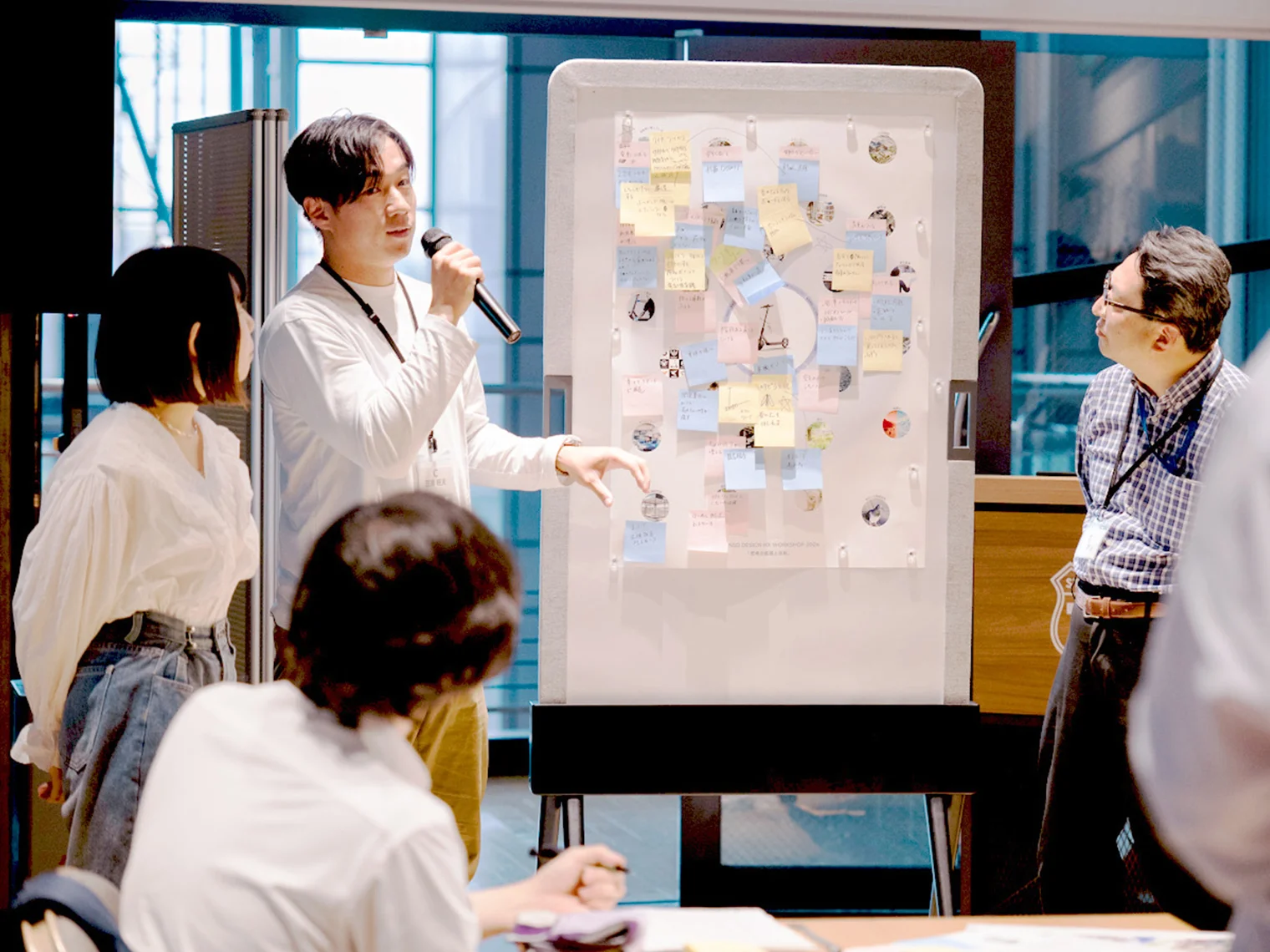
Putting HX into Practice Together: Collaborating Within and Beyond the Company
“While developing such tools, it is essential to collaborate with internal and external stakeholders to put HX into practice.
Within the DENSO Group, we’re creating educational materials to help employees understand HX and apply design thinking to problem-solving. We’re incorporating this into training programs for new employees and other internal initiatives to spread awareness.
Externally, we’re working to raise broader awareness of HX—and DENSO’s vision—by connecting with people outside the company.Tomoe Ota from the Design Division describes these efforts:
“First, to build connections with a wide range of people, we are organizing workshops for diverse groups — from working professionals and university students to junior high, high school, and even elementary school students.We are also expanding our efforts overseas through an industry-academia collaboration project with Nanyang Technological University in Singapore and Nagoya Institute of Technology.” (Ota)
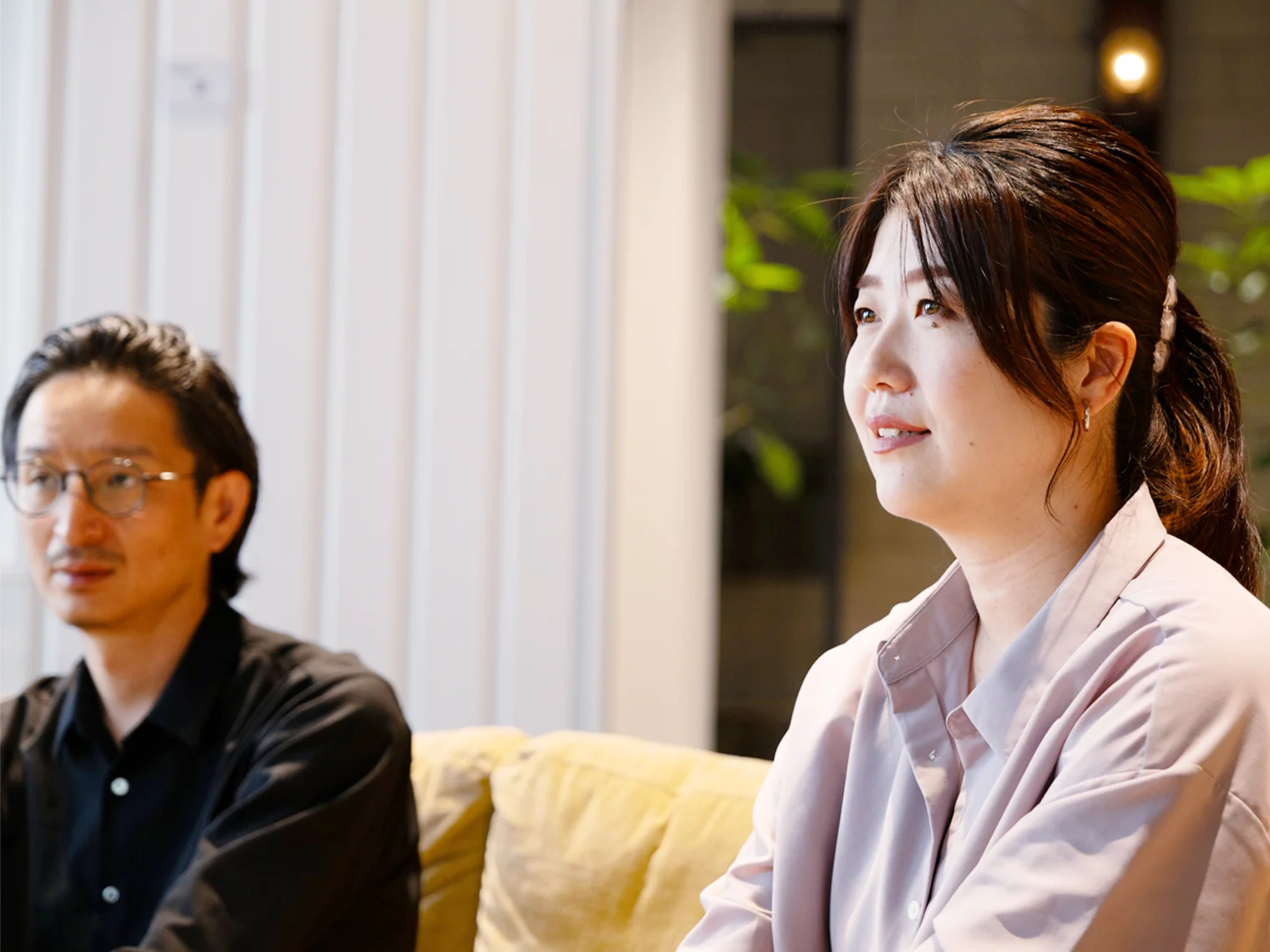
The driving force behind these active efforts both inside and outside the company is our desire to make solving social issues part of the company’s culture. “Unlike departments that handle specific products, the Design Division—positioned within the company-wide R&D Center—aims to take on this role.” (Yamamoto)
“Creative skills are really about the ability to act and communicate. I believe one of our greatest strengths is shaping a culture that embraces solving social issues and supporting well-being—and embedding that mindset across the company.”(Yamamoto)
This commitment is supported by the vision of realizing the Well-Being Cycle Society described earlier. Yamamoto goes on to say, “To realize this vision, DENSO can’t go it alone—we need partners who share our goals."
It’s important that we grow our network of like-minded people and co-creation partners by connecting across industries, technologies, and the people behind them.Through HX workshops with working professionals and students, we’re building those relationships—with the hope of finding future partners and colleagues who resonate with DENSO’s values.That’s why I want to keep driving external engagement.”(Yamamoto)
If you are in academia or industry and are interested in hosting a workshop with us, we'd be happy to hear from you. We’ll continue using our HX tools to run workshops with people from a wide range of fields—all with the goal of inspiring more people to connect with DENSO’s vision.
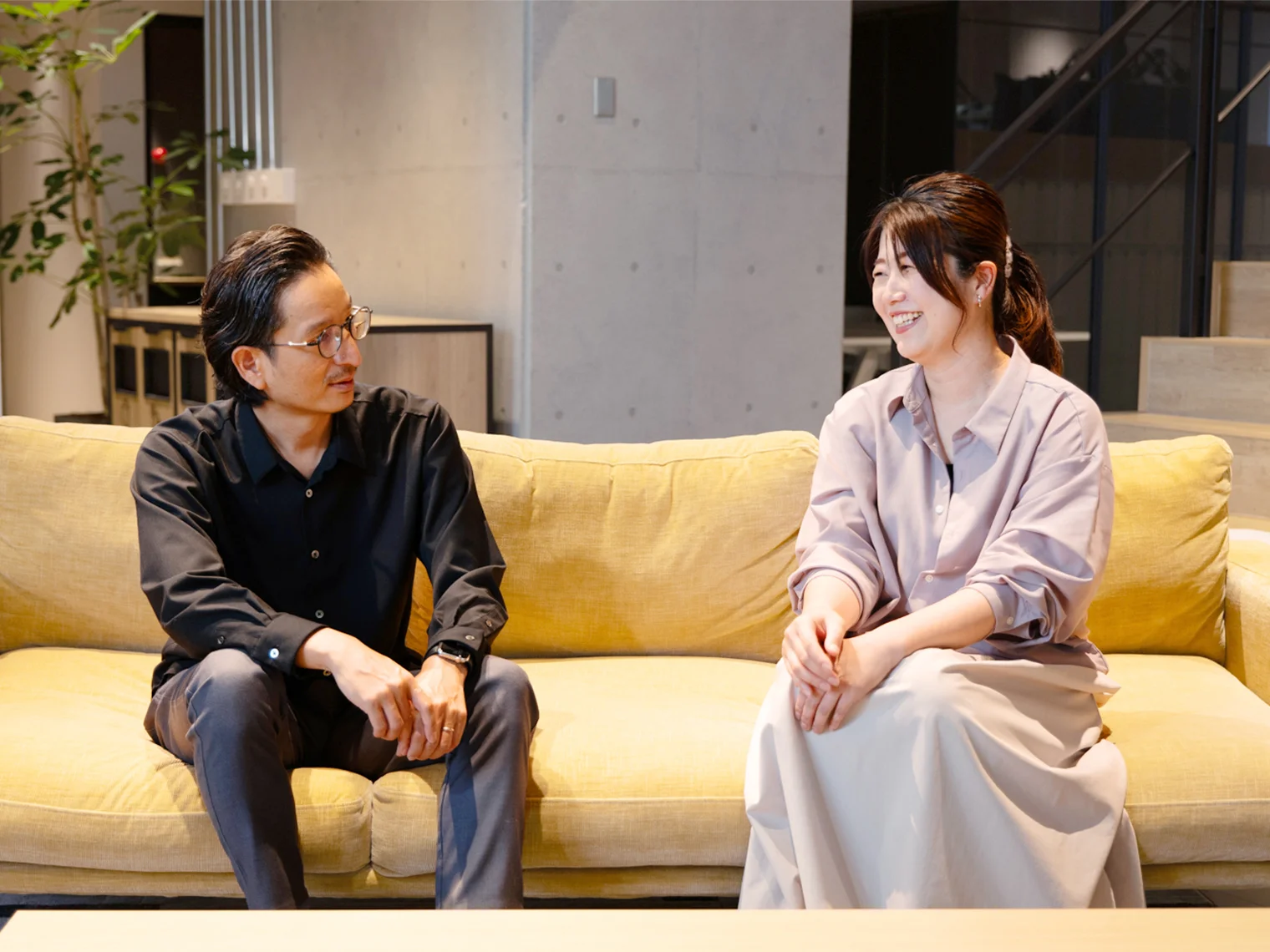
COMMENT
Changing your "Can'ts" into "Cans"
Where Knowledge and People Gather.

